#PlasticInjectionMolding
Text
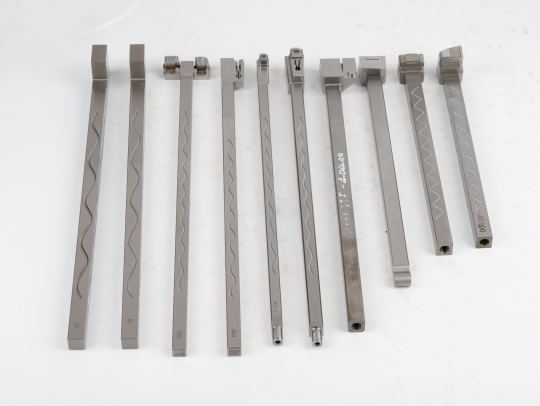
High Precision Plastic Mold Parts Lifter and Closer Injection Mould Making
Wechat/Whatsapp:008613389007166
Email: [email protected]
#lifter#moldparts#mold#mould#injectionmolding#plasticmold#plasticmoulding#plasticinjectionmolding#plasticinjection#carparts#autoparts#sikaida
2 notes
·
View notes
Text
Explore Injection Molding Parts at Petron Thermoplast
At Petron Thermoplast, we specialize in crafting custom, precision-made injection molding parts tailored to meet the demands of any industry. Let us take your project to the next level with injection molding solutions that deliver on both performance and value.
Visit Website - https://petronthermoplast.com/injection-molding/
Contact No. - +91-8218684097
Request for Quotation - [email protected]
#injectionmolding#plasticinjectionmolding#plastic#injectionmold#engineering#plastics#manufacturing#molding#plasticsindustry#plasticinjection#plasticmolding#plasticmold
0 notes
Text

Injection moulding machines are the backbone of modern manufacturing, transforming raw plastic pellets into a myriad of products with precision and efficiency. From everyday household items to intricate automotive components, these machines make it all possible.
Clink on the Link for more details on Injection Moulding machine dealers in Lucknow:
#injection moulding#injection moulding machine#machine#PlasticInjectionMolding#Manufacturing#MoldMaking
0 notes
Text
Automotive Plastics Market Opportunity Assessment, Market Challenges, and Key Players Landscape by 2030

The qualitative report published by Exactitude Consultancy research on the “Automotive Plastics Market offers an in-depth examination of the current trends, latest expansions, conditions, market size, various drivers, limitations, and key players along with their profile details. The Automotive Plastics market report offers the historical data for 2018 to 2023 and also makes available the forecast data from the year 2024 to 2030 which is based on revenue. With the help of all this information research report helps the Market contributors to expand their market positions. With the benefit of all these explanations, this market research report recommends a business strategy for present market participants to strengthen their role in the market. This report analyzes the impact of the Covid 19 pandemic on the Automotive Plastics Market from a Global and Regional perspective.
The global automotive plastics market is expected to grow at 7.9% CAGR from 2024 to 2030. It is expected to reach above USD 35.93 billion by 2030 from USD 18.12 billion in 2023.
Top Key Players are covered in the Automotive Plastics Market Report:
BASF SE, SABIC, LyondellBasell Industries Holdings BV, LG Chem, DuPont, Covestro AG, Evonik Industries AG, and Solvay, Arkema, Borealis AG.
For The Full Report Click here:
https://exactitudeconsultancy.com/reports/2103/automotive-plastics-market/
#AutomotiveMaterials#PlasticTechnology#CarPlastics#PolymerEngineering#PlasticInjectionMolding#AutomotiveManufacturing#PlasticInnovation#PlasticDesign#PolymerMaterials#PlasticEngineering#PlasticAutomotive#VehiclePlastics#PlasticProcessing#AutomotiveIndustry#PlasticAdditives#PolymerScience
0 notes
Text
#plastics#plastic#plasticsurgery#engineering#plasticpollution#plasticinjectionmolding#moldmaking#plasticfree#injectionmolding#moldmaker#dprinting#molddesign#tooling#cncmachining#partdesign#automation#plasticindustry#plasticsucks#plasticfreeliving#plasticocean#machineshop#productdevelopment#machinist#plasticpollutes#recycle#toolanddie#medical#instamachinist#environment#cadcam
0 notes
Text
https://www.mitsuchem.com/
We are Mitsu Chem, a leading manufacturer of world-class plastic blow-molded and injection-molded products.
#BlowMolding#BlowMoldedGoods#PlasticBlowMolding#BlowMoldedProducts#BlowMoldedPlastics#InjectionMolding#InjectionMoldedGoods#PlasticInjectionMolding#InjectionMoldedProducts#InjectionMoldedPlastics
1 note
·
View note
Text
Process Overview of an Extrusion Blow Molding Machine - Leshan Machine
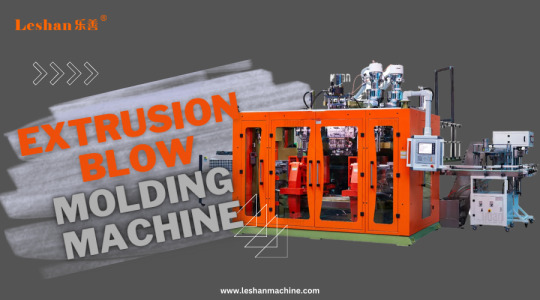
Blow molding is production procedure manufacturers utilize to manufacture customized shapes, containers, and plastic bottles. They can accomplish this production procedure through various processes. Extrusion blow molding is a production procedure where plastic pellets are initially melted into an extruder and then ejected into a deep tube known as a parison. The extruder's barrel helps it hold the raw substances being produced, and screws play a crucial role in helping mix the substance inside.
Experts have divided the extrusion blow molding procedure into two sub-kinds: intermittent and extrusion blow molding. In continuous blow molding, the plastic is squeezed out constantly while the equipment runs. With intermittent extrusion blow molding machine, the extruder operates for a particular period and fills the extrusion blow molding machine reservoir with plastic; after that reservoir is filled, a ram gets activated and pushes the substance from the extrusion blow molding machine reservoir through its extrusion head.
Description of Extrusion Blow Molding Machine:
As far as blow molding is concerned, extrusion blow molding is the most essential. Utilizing a water-cooled mold and extruder, a parison which is a hot plastic tube is caught in a plastic piece. Like, whenever people are blowing a balloon, the air is blown into a mold after the molds get closed. The extrusion blow molding machine feeds substance into a feeding transfer screw through a feeding hopper. An extrusion blow molding machine utilizes a deep tube as an instrument to manufacture the components. Experts call that tube a parison. To blast the deep tube and hollow mold closes around it. As another parison is being squeezed from the equipment, air pressure is utilized to mold the parison inside the mold.
Therefore, bottle manufacturers can complete the manufacturing procedure more rapidly.
For manufacturing parisons, the substance is squeezed out into a hollow tube utilizing a specially built blow molding die. Compared to injection molding machines, extrusion blow molding machines help manufacturers produce larger plastic pieces. Therefore, if manufacturers are interested in producing larger plastic parts, they should buy bulk extrusion blow molding machines from a well-known extrusion blow molding machine exporter and use these highly advanced machines. Extrusion blow molding is also less costly than injection blow molding machines as it does not produce pieces featuring internal tensions. Manufacturers can run extrusion blow molding as a semi-continuous or continuous procedure, depending upon their specific application.
Extrusion blow molding machines feed substances into a feeding transfer screw through a feeding hopper. A particular blow molding die is used to direct the material's flow into the parison. Gravity makes this parison fall unless it reaches a pre-decided length, at which point the mold seals the bottom edge( that provides the distinctive end seal), and the mold closes around it. The parison is cut open, and the blow pin shifts to the tool's top and swells the parison against the tool cavity's walls. Here the terminology cavity refers to an individual molding surface that would manufacture a one-blow molded component. The quantity of the commodity required drives the cavitation and the magnitude of the molded container.
Definitions of Essential Procedure Terminologies:
Mold:
A mold is an assembly that could encompass at least one cavity. It is usually composed of aluminum or another metal.
Blow Pin:
The blow pin is a tooling part that is introduced into the molten parison and mold to pump the compressed air. The tip of the blow pin also helps develop the neck by either the compression air's force or the blow pin's mere compression force against the substance( and the mold's neck finish), depending upon the kind of molding equipment procedure being utilized.
Flash:
A flash is an excessive substance that expands from the mold.
How Does Extrusion Blow Molding Take Place?
This blog section divides the extrusion blow molding procedure into five steps.
1 The extruder turns every plastic pellet into a molten substance by using sheer force and a heated barrel. Both temperatures ( external and frictional temperatures are utilized). They melt the plastic by pressure.
2 The extrusion blow molding machine moves the substance through the extrusion tooling to develop a parison.
3 The extrusion blow molding machine captures the parison by closing it into the water-cooled mold.
4 Next, compressed air is pumped into the parison by a blow pin. This pumped air inflates the parison into the mold cavity's precise shape, thus manufacturing a hollow plastic bottle, part, or container. If you have ever witnessed glassblowing, it is very much like that.
5 After the plastic has sufficiently cooled, extrusion blow molding machine operators should open the mold and find their products ready in it with flash or excessive plastic. Then, extrusion blow molding machine operators should take their plastic products and follow them up by manually removing the flash or excessive plastic or by equipment. After that, they can send that flash by using a grinder to a surge bin. This excessive substance could be reintroduced to the production procedure through the substance handling system keeping wastage to almost zero.
Applications of Extrusion Blow Molding Machines:
1 Chemical and Petrochemicals:
Manufacturers utilize the extrusion blow molding method to make lubricant and petrochemical containers by using high-density polyethylene or low-density polyethylene material. Examples of products manufactured by extrusion blow molding machines are glue grease, lubricants, jerry cans, petrochemical tanks, motor oil bottles, and plastic fuel tanks. Sometimes, manufacturers apply numerous layers techniques to those containers as it can enhance their gas barrier qualities and add to the storage life. Also, it could be more cost-saving and eco-friendly because it utilizes recycled substances.
2 Medical Supplies:
Biomedical or pharmaceutical commodities utilize different plastics for packing. High-density polyethylene is normally applicable to collagen powder, protein shake, nutrition supplements, powder shake, health safety medicine, vitamin supplements, capsule, and medical pills. Manufacturers often utilize low-density polyethylene to produce packaging of liquid commodities like enema, oral liquid, contact solutions, eye drops, nasal spray, nasal rinse, liquid vitamins, liquid stomach relief, cough medicine, and syrup. They utilize polyvinyl chloride to make oxygen masks and polypropylene to make drip bottles.
#moldingmachine#injectionmolding#injectionmoldingmachine#plasticinjectionmolding#blowmolding#pumachine#technicalparts
0 notes
Text


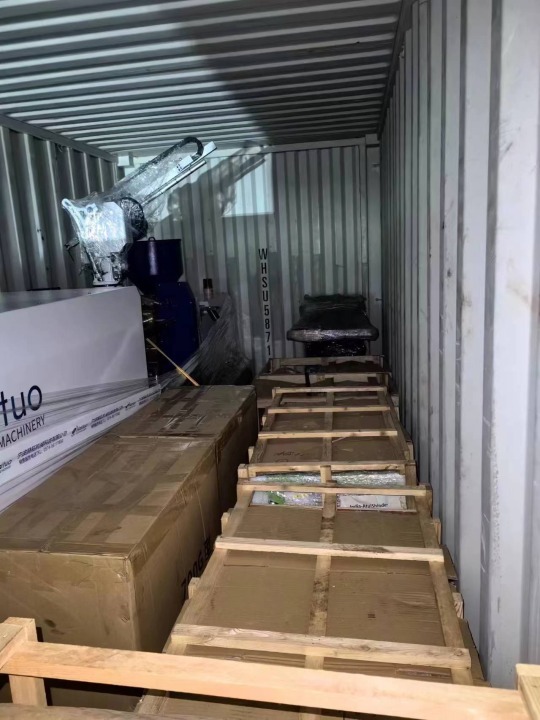
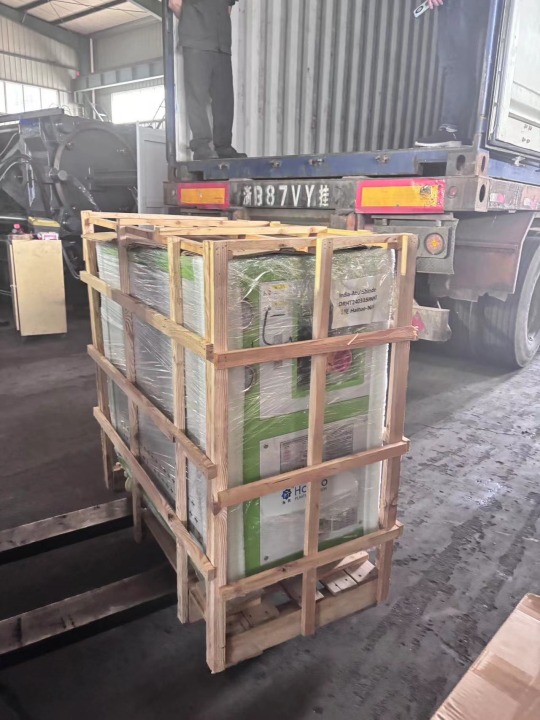

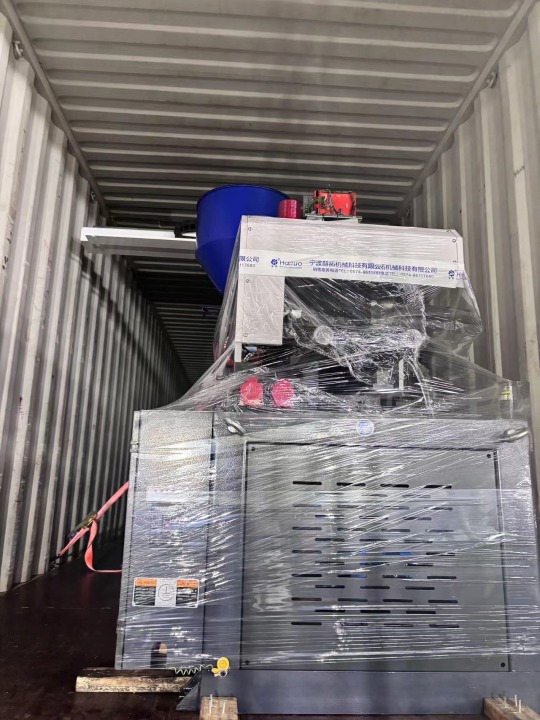
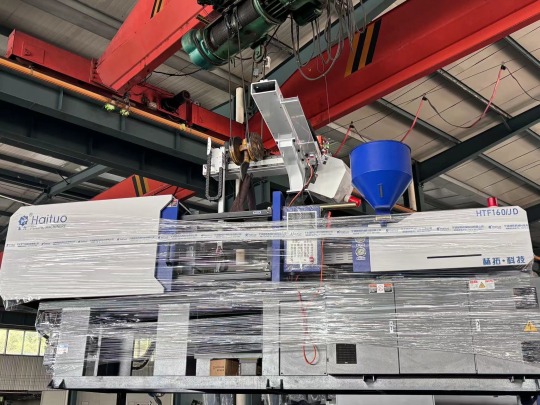
#moldmaker#haituo#injectionmolding#plasticinjectionmold#haitian#injectionmoldingmachine#injectionmold#haitai#mould#plasticmachine
0 notes
Text
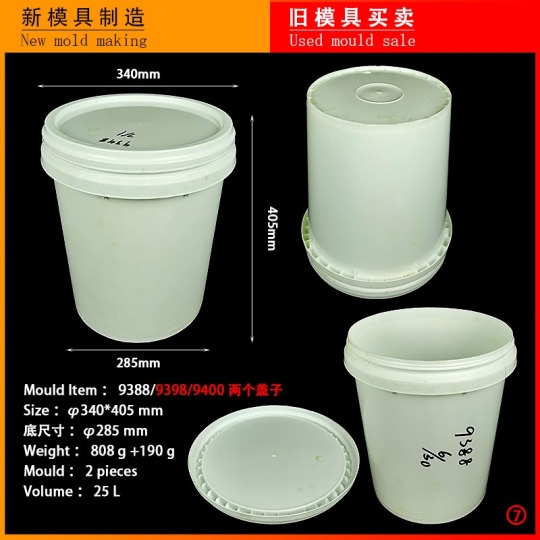
Ready Used Mould for plastic bucket, plastic paint bucket mould
We have 18 years experience in making plastic injection mould, such as basin mould, pail mould, container mould, chair mould, crate mould, flower pot mould, shelf mould
we also deal with Ready used moulds, for the used mould, we will check the cooling circuit again, and test the mould again to ensure it run well.
If you want to make new plastic mould, or want to buy used mould to save cost and time.
Feel free to contact me.
Email: [email protected]
Mob:+8613857607181
Wechat/Whatsapp: +8613857607181
#plasticmold#plasticinjectionmold#UsedMould#SecondhandMould#PlasticChair
0 notes
Text
High Precision Plastic Mold Parts Lifter and Closer Injection Mould Making
Wechat/Whatsapp:008613389007166
Email: [email protected]
#lifter#moldparts#mold#mould#injectionmolding#plasticmold#plasticmoulding#plasticinjectionmolding#plasticinjection#carparts#autoparts#sikaida
2 notes
·
View notes
Text
How is plastic manufactured
Plastic is manufactured through a process called polymerization, where small organic molecules, known as monomers (such as ethylene or propylene), are chemically bonded together to form long chains called polymers. #injectingmouldingmachine #hollowwaygroup #plasticinjectionmold
https://hollowaygroup.com.au/pages/mould-design
0 notes
Text
Get the precise results you need for your next project with nagualmetal CNC Machining Service. Our state-of-the-art equipment and experienced team of machinists will ensure that your parts are made to exact specifications.
Nagual Precision (shenzhen) Limited
Contact Us : -Welcome Contact:
Tel: (86) 755-329 71839; Cell:(86)13510902340
Email: [email protected] Office:ROOM B 1318,YOUSONG TECHNOLOGY BUILDING EAST CENTRAL 1 ROAD LONGHUA DISTRICT SHENZHEN GUANGDONG CHINA Post 518109
#cncmachiningservice#sheetmetalfabrication#plasticinjectionmold#PrototypeFabrication
0 notes
Text
ADDITIVES FOR PLASTIC INJECTION MOLDING
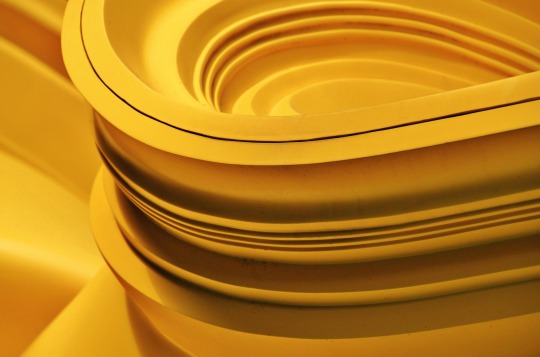
The plastics used for injection molding come in a variety of types, grades and chemical compositions. Each has its own unique properties and, thus, there are differences in their performance and in how they interact with the world. These resin characteristics are primarily why they are chosen as the base material for a particular part or component (cost being another common consideration). However, while a certain polymer may fit most of the requirements of a particular product, a need might exist for an additional quality the plastic does not contain. That’s where additives come in.
Additives for plastic injection molding are substances that are added to and bond with the base resin of a part in order to create a compound with certain modified or additional properties the basic polymer did not have by itself. Generally speaking, additives are used to enhance the appearance or performance of a part; to increase a material’s stability or flexibility; to facilitate or optimize production methods; or to extend the service life of a product. Further, additives have varying degrees of compatibility with different plastics (i.e., all additives will not mix well with or create the same qualities in all resins). A plastic additive can be in the form of a liquid, powder or pellet.
One note, by the way, is that plastic injection molding uses two types of materials - thermoplastics and thermosets. Thermoplastics can be melted and reshaped repeatedly, whereas thermosets are irreversibly hardened by curing from a soft solid or viscous liquid. Here, we will focus our attention on thermoplastics.
While there are myriad types of plastic additives, it can be helpful to visualize them in certain categories, although many can be placed into more than one classification, similar to movies fitting into multiple genres. With that being said, most additives fit into at least one of the following ten categories.
Light
Additives associated with light can be used to reflect, diffuse, filter, absorb or resist the harmful or aging effects of natural or other sources of light within various frequencies, wavelengths and amplitudes (e.g., infrared). In other words, these light stabilizers protect a part from photodegradation. Other materials also can be added to polymers to create a part that is laser markable.
Weather
Substances often are added to resins to guard against atmospheric conditions. These can include UV rays, radiation (i.e., electromagnetic waves), water, and extreme temperatures. Results can include a reduction in the alteration, fading or degradation of materials.
Temperature
Heat-related additives (e.g., ceramic fillers and mineral reinforced additives) include those that are fire retardant, flame resistant or that otherwise protect a part from high temperatures. Creating a higher melting temperature generally gives a material greater creep resistance (or a reduction in deformation under stress). Additionally, extreme cold can cause a plastic part to become brittle or crack. Accordingly, plasticizers, which increase the part’s flexibility and elasticity, or chemicals designed to lower a material’s freezing point (thereby adding to its stability) can be combined with a polymer. Thus, these types of additives can extend the operating temperature range of plastic materials. Also, some substances can increase a part’s thermal conductivity.
Processing
Some additives are included in a compound to assist with the injection molding process. These can include blowing agents, foaming agents, and mold release agents. Additionally, lubricants can be added to plastics to help with manufacturing or to increase the desired performance of the part.
Chemical
There are a variety of additives relating to resisting material degradation or contamination caused by other chemical agents, such as antioxidants and antimicrobials. In addition, some substances contribute to the chemical compatibility of parts used in the food and beverage, medical and other industries.
Moisture
Some additives are considered or used specifically in relation to water, whether in its liquid or gas (vapor) form. These include moisture resistant or repellent substances, which can provide anti-stain, non-leaching and non-wearing attributes.
Physical
Many plastic additives are used to modify the physical, structural or mechanical properties of a part. These can be designed to increase the strength, hardness, softness, durability or rigidity of a resin. Alternatively, there are those that enhance a resin’s elasticity, flexibility or impact resistance. Also, some additives can be utilized to adjust the mass or weight of a part either up or down.
Visual
As a variation on some other categories, certain additives simply affect the appearance or aesthetic characteristics of a plastic part. Probably the most common of these are colorants - in the form of dyes and pigments - which can create a polymer in virtually any hue. In addition to standard colors, there are optical brighteners, those that glow in the dark, or those that create variegated effects (e.g., marbling), shimmer effects (e.g., pearlescent, iridescent), or sparkle effects (e.g., metallic, reflective). There also are thermochromic colorants, where colors change due to an increase or decrease in temperature, and photochromic colors that change with exposure to light. Likewise, some additives can modify the clarity of a part.
Bioplastics
Another relatively modern category of additives are bioplastics, which include biobased and biodegradable resins. Additionally, an assortment of recycled materials, agricultural bioproducts, natural fibers and biocomposites are being added to traditional plastics in order to create a more eco-friendly end product. Bioresins themselves also can serve as the base material for a part.
Electrical
Certain plastics need an additive to make parts antistatic or, alternatively, to be electrically conductive. In addition, some components have security, traceability or identification requirements, where additives can provide X-ray detectability or radio-frequency identification (RFID), for example.
Conclusion
Plastic injection molding utilizes a wide range of polymers with various qualities and characteristics. However, many parts and components have specific requirements their base resins cannot precisely meet by themselves, despite otherwise being the best candidate for a product. When this occurs, substances collectively known as additives can be blended with the basic material to create a compound with modified or added properties. Accordingly, plastic additives can optimize an injection molded part’s performance or appearance, and they should be considered when designing and developing a new project.
–
Want more information?
Check out this supplementary infographic →
Questions?
Feel free to contact our support team. We’re here to help.
–
Ash Brown // VP, Business Development
#plasticinjectionmolding#injectionmolding#plastic#plastics#manufacturing#plastic additives market#plastic additives#additives
2 notes
·
View notes
Link
Here’s a video I made of 3D printed parts in a UV curing machine! We love things that glow!
#3D printing#3D prototype#3D printer#3D printed#UV curing#plasticinjectionmolding#innovation#prototype#manufacturer#photo of the day#rapid prototyping#plastic products#product development#manufacturing#injection molding#molding
1 note
·
View note